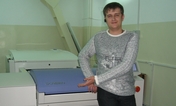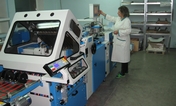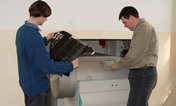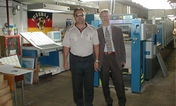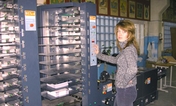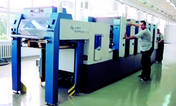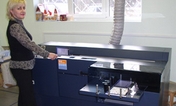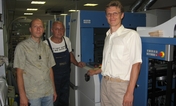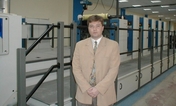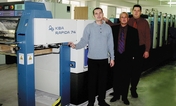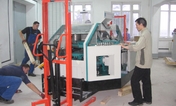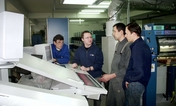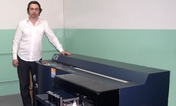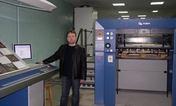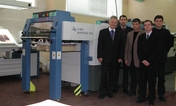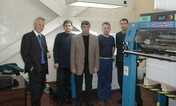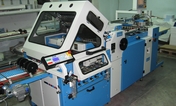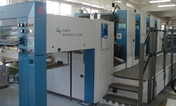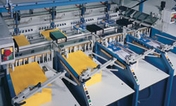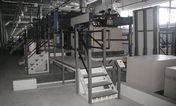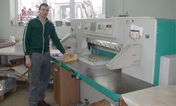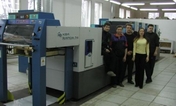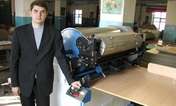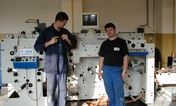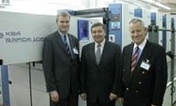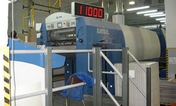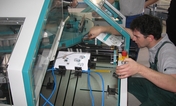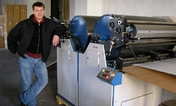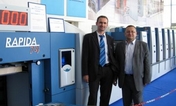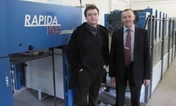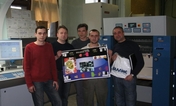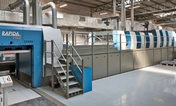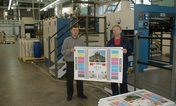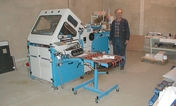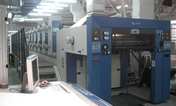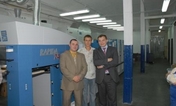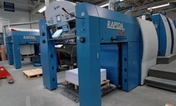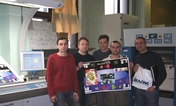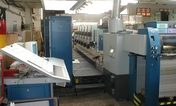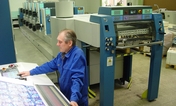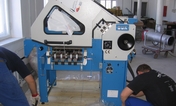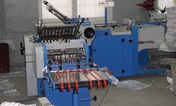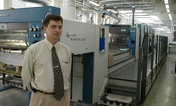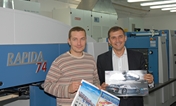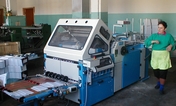
At drupa last year, KBA celebrated the official launch of the Rapida 145, its latest series of high-performance large-format presses in format VI (106 x 145 cm). In the meantime, almost 40 customers have taken delivery of the new presses, which are engineered for production speeds up to 17,000 sph.
At the beginning of 2013, but without pomp or a special welcome party, the Rapida 145 was joined by its almost identically equipped and automated “big sister”, the KBA Rapida 164 in format VIIb (120.5 x 164 cm). With a maximum production speed of 15,000 sph (with high-speed package) and extremely short makeready times, KBA has once again redefined the yardstick for this format class.
The new Rapida 164 supersedes the vastly successful Rapida 162 and 162a series, which could rightly be described as institutions on the book printing and packaging markets. They were first presented in 1995 and had received several technical makeovers over the intervening years. With the Rapida 164, practically all the automation solutions and highlights of the medium-format makeready world champion Rapida 106 are now also available in format VII.
The new press incorporates the same DriveTronic components as the Rapida 106 and Rapida 145. The format has also been enlarged slightly relative to the predecessor series, namely by two centimetres in the sheet width and half a centimetre in the sheet length compared to the Rapida 162a.
Consistent DriveTronic implementation
The “KBA DriveTronic” concept stands for dedicated drive technologies, maximum operator convenience and exceptionally fast makeready and job changes. Consistent implementation of the modern drive concept on the Rapida 164 starts at the shaftless DriveTronic feeder with its individual, direct drives for all controlled motions. DriveTronic Infeed provides for motorised adjustment of the front lays, and a touchscreen display with direct function keys ensures reliable and intuitive press operation. One feature which is not only new in this format class, but indeed unique to KBA, is the sidelay-free infeed DriveTronic SIS. Besides avoiding marking issues with sensitive substrates, the sidelay-free infeed eliminates all need for operator intervention and guarantees the highest possible alignment accuracy.
In addition to the plate changing variants SAPC (semi-automatic; change time approx. 110 seconds per unit) and FAPC (fully automatic, with new optimised change process; change time 3 minutes for all units), the Rapida 164 can now also be configured with plate cylinder direct drive for simultaneous plate changing (DriveTronic SPC). In this case, the total plate changing time is reduced to just 110 seconds, irrespective of the press length.
Fast washing processes
When the Rapida 164 is equipped with DriveTronic SPC, the blankets and impression cylinders can both be washed parallel to the plate changing. To this end, the press possesses a second washing beam (CleanTronic Synchro). The two washing beams can also be used together for blanket washing — for a time saving of up to 50 per cent.
But CleanTronic Synchro is not the only feature geared to shorter washing times. With the function ReInk, ink roller washing — normally one of the longest makeready processes on the press — is accomplished in 90 seconds.
CleanTronic Multi, furthermore, provides a multi-purpose washing circuit to permit the use of different solvent types (UV/conventional), and in this way guarantees a first-class wash-up without time-consuming manual cleaning for users who need to switch frequently between different ink systems. With CleanTronic UV, blankets can be washed while the UV lamps are in standby mode, and the CleanPrint function can even replace blanket washing altogether with short runs, through targeted stripping of the remaining ink from plate and blanket.
High automation for coating forme changes
Two different coater towers are available for the Rapida 164. The standard version pairs the chamber blade coating system with automated forme changing (SAPC). The positioning of the forme cylinder for changing is here automatic — as is also clamping and tensioning of the coating forme.
On a coater with DriveTronic SFC (Simultaneous Forme Change), the coating forme is changed simultaneously with plate changing and washing in the printing units. If only one coater of a double-coater press is in use, makeready on the second tower can be done while the current production is still running. With the AniSleeve system, it is additionally possible for a single operator to exchange the anilox roller sleeves, either during production or parallel to other makeready processes. This is at the same time a fast and convenient way to vary the coating application from job to job.
It goes without saying that the new Rapida 164 also possesses a high-level delivery with full preset capabilities. The Venturi sheet guiding concept ensures reliable sheet transfer right up to the maximum production speed of 15,000 sph, while KBA VariDry dryers in the extended delivery guarantee optimum drying results. In both infrared/hot-air and UV drying systems, the individual modules can be switched flexibly between the different interdeck and final drying positions. With VariDryBlue, KBA offers a particularly energy-efficient dryer system. The already warm, but not yet saturated drying air is recycled to subsequent dryer modules. Energy savings of up to 50 per cent are possible.
Ultramodern console with countless options
Since drupa 2012, all Rapida models — and thus also the Rapida 164 — are supplied with the new ErgoTronic console with wall screen. This console is able to accommodate various online systems for quality control, such as the automatic colour measuring system ErgoTronic ColorControl or the register measuring systems ErgoTronic ACR and ICR. Online integration with KBA DensiTronic and the pre-press department is similarly possible. The live image from inline quality monitoring with QualiTronic ColorControl or Professional can be displayed on the wall screen. Like all KBA consoles, the console of the Rapida 164 incorporates the integrated remote maintenance module PressSupport 24 Sheetfed with an Internet link for software updates.
The Rapida 164 can be supplied in all typical configurations for commercial, book and packaging printing, with one or two coater towers, intermediate dryer towers, a raised foundation for higher piles, accessory packages for lightweight papers, heavy board and corrugated, PileTronic pile logistics, perfecting, and many further application-specific extras. It thus maintains all the flexibility of its predecessor, but at the same time promises significantly enhanced performance, faster makeready processes and even greater economic efficiency in production.
The first Rapida 164 presses have already been in production in the field for some time. The experience gained flows directly into optimisation of the current series. As the predecessor model Rapida 162 is completely sold-out, KBA now offers only the new Rapida 164 for this format class. An open house with fitting official presentation of the new press is to be held at the KBA facility in Radebeul in the near future.

